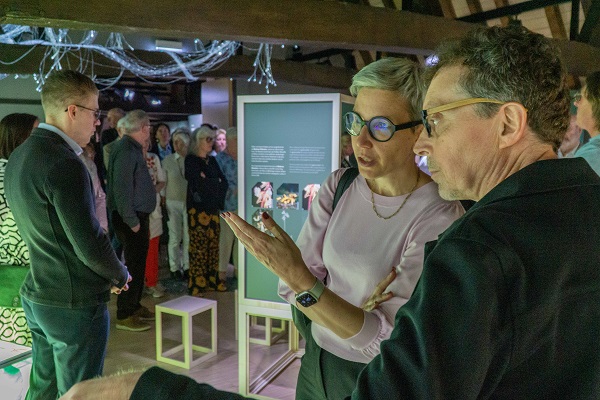 Orcvhid Exhibition Vernissage;
Credit: Musée national d’histoire naturelle – ‚natur musée‘
Orcvhid Exhibition Vernissage;
Credit: Musée national d’histoire naturelle – ‚natur musée‘
Luxembourg's Natutal History Musueum (Musée national d’histoire naturelle on rue Münster in Luxembourg-Grund) has opened a new exhibition on its 2nd floor entitled "TRICK OR TRUTH! – WILD ORCHIDS IN LUXEMBOURG" which takes place from 26 May to 27 August 2023.
The new exhibition is curated by Thierry Helminger and was conceived and realised by the National Museum of Natural History Luxembourg in collaboration with the plant modelist Sebastian Brandt; it was inaugurated on Thursday 25 May in the presence of Luxembourg's Minister for Culture, Sam Tanson.
With over 30,000 known species, orchids form the second largest plant family in the world. They are masters of deception, attracting their pollinators with unusual methods. What most people may not know is that 45 species are also native to Luxembourg. Yet it is precisely the wild orchids that are excellent indicators of the near natural, species-rich habitats that need to be preserved and protected in the context of the global biodiversity crisis.
Native orchids have adapted to very different ways of life. Some can survive in the darkest forest with almost no light; others can tolerate extreme drought and strong sunlight on dry grasslands, while still others can survive in damp or even swampy meadows.
Like all orchids, the orchids growing wild in Luxembourg are true masters at luring their pollinators under false pretenses - deceptively real! - so that they transport their pollen as a whole package from one flower to the next.
From "ghost orchids", "lady's slippers" and "fungal symbioses": The exhibition shows which orchids are native to Luxembourg, what they look like and what makes them special.
· The "ghost orchid": very rare and highly specialised - The leafless orchid lives hidden in the damp mulm of dark, old beech forests. Only irregularly, in rainy years with high humidity and warmth, can its flowers be seen for a few days in July.
· The lady's slipper: seductive insect trap - The bright yellow, cup-shaped lip of the lady's slipper attracts insects. They find no grip on the smooth walls of the flower and slip into the trap. There is only one way to freedom: the insects have to squeeze through a narrow tube past the stamens and stigmas, pollinating the flower in the process.
· Cung's flesh-coloured fingerroot: a very special Luxembourgian rarity. - It was discovered in Luxembourg and first described in 2017. The type specimen is kept in the museum's herbarium.
The unique diversity and splendour of orchid flowers is presented in the exhibition using, among other things, unique plastic casts of real plants. These award-winning botanical models by Sebastian Brandt are handcrafted using a new type of reproduction process in painstaking detail.
For details, see https://orchid.mnhn.lu/








